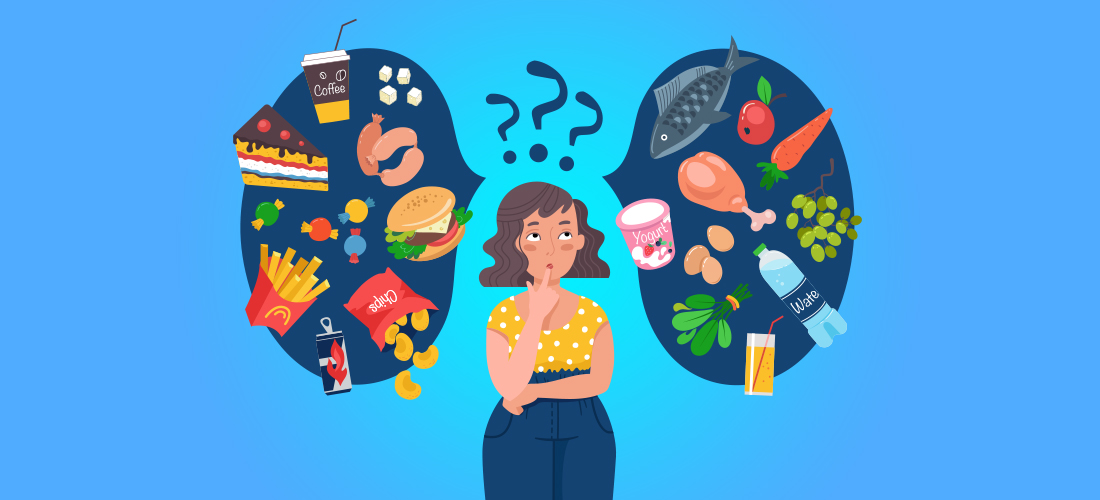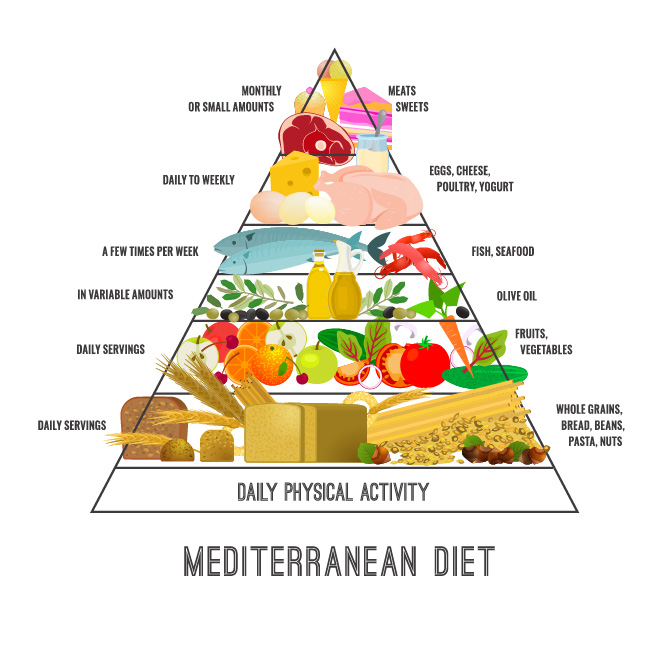 Contact
About Us
Articles
Home
Contact
About Us
Articles
Home

In recent times, there are so many diets in the mainstream, that it's hard to know what is truly a healthy diet. This array of choices is especially difficult for those from the older generations who grew up in simpler nutrition times where a meat and potatoes diet was the norm, and no one really knew of the harmful effects of fried foods. This article discusses the evolution of the healthy diet concept and what you should know about what a healthy diet for most people is today.
The definition of diet is merely just the way one eats. It comes from the Greek term diatia that means a way of living based on self-control and eating in moderation. However, over time this simple word has turned into a bad word that brings visions of restriction and deprivation.
In 1918, Lulu Hunt Peters wrote a book talking about the importance of counting calories, and perhaps this paved the way to the many diets in society today. Around this time in 1916, the USDA started releasing guides to help people select healthy foods. They were basic and provided food groups and household measure guidelines. Further USDA guides included the following information:
In the 1950s, people consumed more fresh, whole foods with a common lunch being a sandwich and fresh fruit and a dinner meal being meat and potatoes. However, heart disease rates at this time were higher than in the 1900s likely due to increased rates of cigarette smoking and being less active. Diet may have also had something to do with it too, since convenience foods started coming out on the market around this time.
Then in the 1970s, as convenience foods became more common, the average calorie intake of Americans started going up. In fact, Americans consumed about 23% more calories per day on average than in 1970. These extra calories came mostly from flours, grains, fats and oils, which are common ingredients in processed food products and fast food.
As you can see from the USDA food guides, as the Food Pyramid came into view in the 1990s, plant-based foods became a larger portion of the “healthy” diet. Over the years, this plant-based approach has led to a steady decline in heart disease rates. Unfortunately, fruit and vegetable intake is still lacking and heart disease rates are still the leading cause of death of adults in the country.
In fact, a federal Centers for Disease Control and Prevention report in November 2017 reveals that only one in 10 adults in the United States eats enough fruits and vegetables. This means that only 10% of adults in the U.S. consume 1.5 to 2 cups of fruit and 2 to 3 cups of vegetables daily.
Why do fruits and vegetables matter so much?
Research shows that fruits and vegetables are protective against heart disease. The reason for this is the wide array of nutrients they contain. Not only do they contain fiber that helps improve digestion, stabilize blood glucose levels and improve cholesterol levels. But fruits and vegetables also contain antioxidants that can reduce inflammation in the body and prevent cell damage that can lead to heart disease. Other nutrients fruits and vegetables contain include:
So, what is a healthy diet today?
Today a healthy diet can be different depending on who you talk to. The first thing you must consider is your diet preferences and any food allergies or intolerances you might have. A food allergy would cause symptoms such as breathing problems or rashes soon after eating a food. On the other hand, a food intolerance would be any food that causes digestive issues like gas, bloating, abdominal cramps or diarrhea after eating. Common diet preferences based on one's health needs and/or values include:
These are just a few examples of food preferences for diets related to food allergies or intolerance. Some people may have several of these preferences combined, which makes it more difficult to ensure they are eating all the proper daily nutrients. In such complex cases, a registered dietitian could help that person make sure they are eating enough of each nutrient daily through food and/or supplements while staying on track with their preferences or health needs.
Once you've decided which type of diet you prefer and which your health would benefit most from, then it's time to look at what a basic healthy diet should contain.
The No. 1 diet for the past two years as decided by U.S. News & World Report is the Mediterranean diet. This Greek-style diet includes basic healthy eating and living concepts for most people such as:

The tenets of the Mediterranean diet can apply to just about any diet preference or nutrient need. If you’re not sure how to create a meal plan based on these recommendations, while meeting your own needs, a registered dietitian can help. Contact your insurance company to see if they cover registered dietitian visits in your area. An investment in such a visit can help you get your health on track and lessen your medical and pharmacy costs over time.
It’s important that no matter what diet culture you grew up in that you consider now what research is telling us. The fact of the matter is that plant-based foods should make up most of your diet in order to help you stay as healthy as can be. And along with that you should include a moderate amount of protein and some healthy fats each day.
By eating in this balanced way, you can reduce your risk of chronic diseases like heart disease and diabetes and in turn live longer. Not only that, but by reducing such risk, you can reduce your medical expenses and in turn save more for retirement and enjoying your life. Healthy eating may seem expensive, but if you eat such whole foods instead of processed foods, then you can actually save money. Use resources like the National Institute on Aging for tips on how you can eat healthy on a budget.
Alliance America is an insurance and financial services company. Our financial planners and retirement income certified professionals can assist you in maximizing your retirement resources and help you to achieve your future goals. We have access to an array of products and services, all focused on helping you enjoy the retirement lifestyle you want and deserve. You can request a no-cost, no-obligation consultation by calling (833) 219-6884 today.


